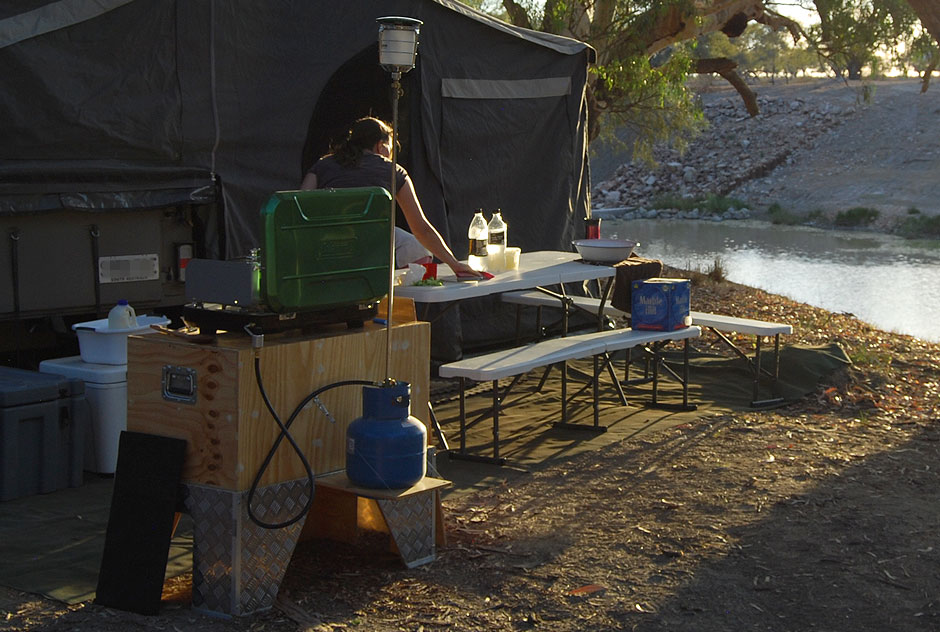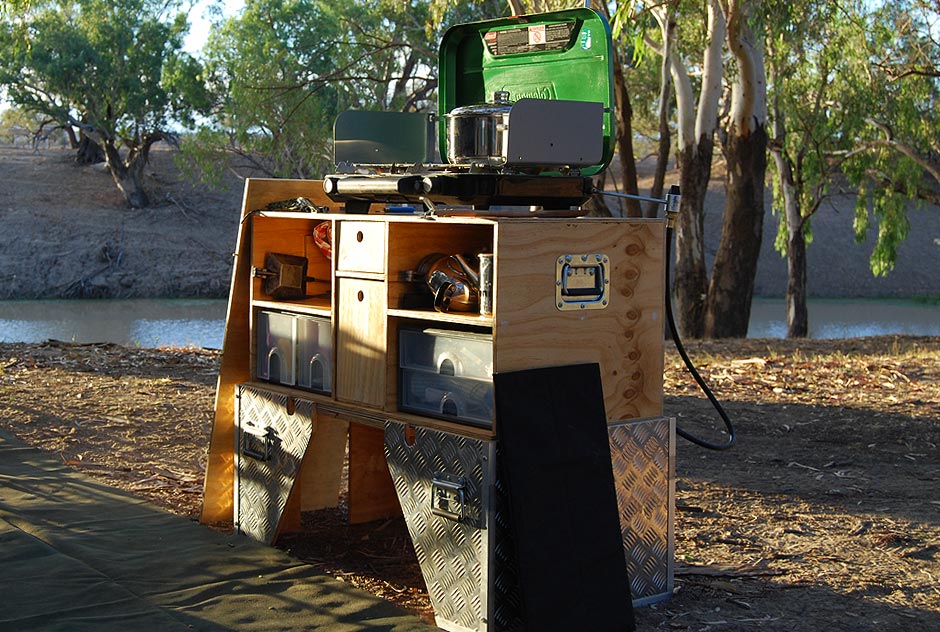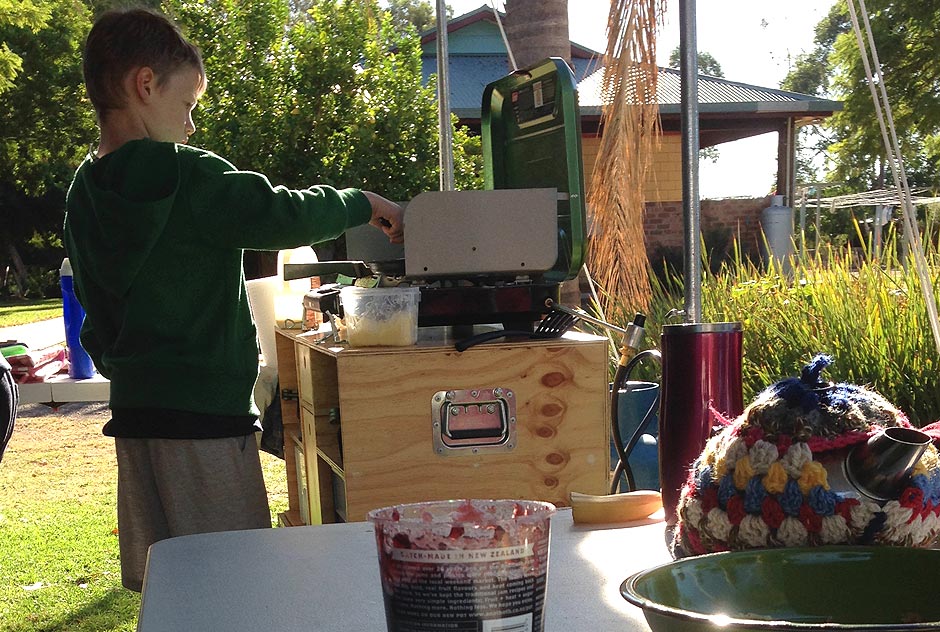When we began discussing doing the around Australia trip we were firm in the idea of using a tent, they’re easy to put up, light weight and flexible when it comes to camping sites. And when we did take a look at the alternatives you were basically still sleeping under canvas, unless of course you wanted to lug a caravan around, which I wasn’t all that keen on.
Then as we were wandering around the annual Caravan and Camping show in 2014, Jane needed to rest her back, which she’d injured at work 4 months earlier. We happened to be poking around the Sar Major display, she found a bed in one of the display campers and had a lie down. As we started to discuss what we’d seen and whether we’d go for tent option A, B or C, the subject changed to how comfortable the bed was. “This is comfy and it’s great to be up off the ground on a proper mattress.” she said.
As we started to discuss the costs, new quick-to-erect tent, strengthening our 6×3 box trailer to cope with the off-road sections of our trip, the figure started getting close to the ‘show special’ price of camper we were lying in. So the subject changed, and within an hour we’d decided we’d ditch the tent idea and buy a camper. As I mentioned earlier we’d looked into the option of campers and pop-up caravans before we settled on the tent, so we were pretty clear on what we wanted to spend and what we’d get for that money. The Sar Major ticked lots of boxes, another wander around to make sure and decision made – where do we sign.
A whole new discussion opens up – what features, and just like building a house the basic price is good but the features really add up. We stood firm on the budget and decided stick with the original plan to customise our own gear just like when we were tenting it.
First decision the kitchen, will it pull out of the trailer, or be a stand-alone unit.
In the $30K+ section of the camper trailer market there are some pretty nifty space saving kitchen solutions, that pulled out of all sorts of spaces and if we wanted to spend that sort of money we would’ve found something quite practical, but at our price point the cleverness was limited.
Another thing bothered me about having the kitchen attached to the trailer. We do a bit of camping with other families and generally the cooking/eating is a communal effort in a central location then we all retire to our tents or campers for sleeping, so in those situations we may have been limited, or the camp would need to revolve around our trailer.
There’s also the space a kitchen has to pull out from, in our trailer that would be dead space, as nothing can be stored there otherwise it would interfere with the sliding mechanism. An finally, I wasn’t all that keen having the cooking smells over time permeate through our bed, which was on top of the trailer.
So it was decided not to have a pull-out kitchen but rather a kitchen box which allowed us to customise our camp to suit our needs. It also meant you could adjust how you set up taking advantage of available shade or shelter, sun position whatever – total flexibility, just the way we like it. So it was back to the spacial models to work out overall sizes and then time to get making.
The kitchen box needs, as the name suggests, contain all things needed to prepare, cook and serve food. Pots, pans, utensils, crockery, cutlery, glassware (plastic), mugs etc.
Also we’ve made provision for washing liquids for dishes, clothes and hands, cling film and foil, paper towel, sponges & scrubbing brush, tea towels. Cook books, spices and two trusty 1950’s jaffle irons (or toastie toaster if you prefer) found in the caravan built by my grandfather in the 1950s and now our lodgings at the farm – but that’s a story for another day.
The finished result is pictured above, if you want a little more information on how it was made click here.




